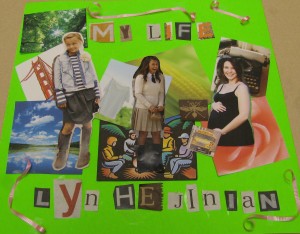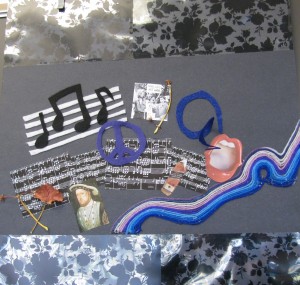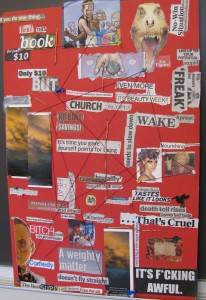Take a picture; it’ll last longer.

I’m a little late to the party on this one, but Gillian Conoley, I admire your Second Questions for Poetry post, in which you ask: “What is your palette? What colors are most often present in your work? How does color act within your poems?”
I don’t know what color my poems are, but I do like trying to decide the color of other people’s poems. In addition, when I’m reading a collection, I like to ask myself such questions as:
- What sorts of shapes does this collection suggest?
- If this collection were an animal, what would it be?
- What tactile sensations or textures does this collection call to mind?
- What era does it seem set in?
- What kind of food would it be, if it were one? What kind of flower?
In his Poetics, Aristotle says “The greatest thing by far is to have a command of metaphor. This alone cannot be imparted by another; it is the mark of genius, for to make good metaphors implies an eye for resemblances.” To this end, I also like to ask my Reading Poetry students to consider these questions and resemblances in relation to books of contemporary poetry. The way I frame this assignment is by having them make moodboards, an idea given to me by my friend, the poet Elizabeth Hildreth, who works as an instructional designer. Last summer, when I was putting my courses together, I ran my syllabi past her expert eye, and she suggested that I “add an opportunity for people who are stronger visually,” because in their early drafts my courses advantaged students who are stronger at reading and writing. “Which duh,” Liz continued, “it's a reading/writing course […] but MAYBE just maybe like instead of saying students can do a summary, maybe they do […] some sort of "mood board" that illustrates their feelings […] And it makes the read/write people be like, WTF, what does this mean? MOOD BOARD. How ridiculous! It expands their minds either way.”
Admittedly, at first, I too was one of the people in the WTF camp. I thought of Joan Didion’s essay “Why I Write,” in which she says, “All I know about grammar is its infinite power. To shift the structure of a sentence alters the meaning of that sentence, as definitely and inexplicably as the position of a camera alters the meaning of the object being photographed. Many people know about camera angles now, but not so many people know about sentences. The arrangement of the words matters, and the arrangement you want can be found in the picture in your mind.”
I liked Liz’s idea, but worried that somehow I’d be letting the visual “win” at the expense of the verbal — letting camera angles triumph when I should be focusing on sentences. But Liz convinced me with her argument that “sometimes the best way to talk about writing is through another art form, too.”
Thus, one component of my students’ final presentations is that they partner up and make a mood board that illustrates the tones and sensations evoked by a collection of contemporary poetry. We’ve only done this assignment once so far — though we’ll do it again this quarter — but the results have been impressive, like this one responding to Berryman’s Dream Songs:

And this one responding to Mark Wallace’s Nothing Happened and Besides I Wasn’t There:

And the one at the top of this post responding to Lyn Hejinian’s My Life.
Now I feel sort of silly for ever doubting Liz’s wisdom. Because poetry, of course, is already intrinsically visual, and tends to function at the limits of what language can do. Therefore it makes sense to consider poems in ways that are not exclusively verbal, like how Frank O’Hara considers in “Why I Am Not a Painter”:
One day I am thinking of
a color: orange. I write a line
about orange. Pretty soon it is a
whole page of words, not lines.
Then another page. There should be
so much more, not of orange, of
words, of how terrible orange is
and life…
Unrelated p.s. To Amber Tamblyn: thanks for your latest post and for the back and forth convo. So often, it can be difficult to talk about identity issues at all, let alone in a cordial fashion, let alone with B.I.G references and proposals for highly competitive new literary journals. These days, when so much of what passes for “discourse” can be anything but civil, it’s been awesome to have a discussion here in a public forum that’s been substantive and friendly. So AmTam (Can I call you that? Do you hate that? I hope you don’t hate that.), thank you for being a friend.
Kathleen Rooney is a founding editor of Rose Metal Press, a publisher of literary work in hybrid genres...
Read Full Biography

